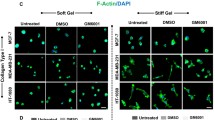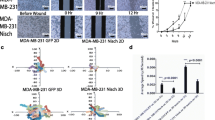Abstract
Objective: To investigate the expression of matrix metalloproteinase-9 (MMP-9) gene in cancer cells induced by adhesion with fibronectin and the underlying mechanism of cell invasion. Methods: Following adhesion of ovarian cancer cells A2780 to fibronectin, MMP mRNA expression was assayed by using reverse transcription-polymerase chain reaction (RT-PCR). MMP-9 promoter was cloned from genomic DNA of HT1080 cells with PCR. The MMP-9-pGL2 reporter gene vector was constructed and then transiently transfected into A2780 cells. Results: Adhesion could induce the expression of MMP-9 gene in A2780 cells, but did not affect longer the expression of MMP-2 or TIMP-1 gene. The induction was enhanced with longer adhesion time. When the transfected cells were allowed to adhere and spread on FN-coated surface, the promoter activity of MMP-9 gene was also enhanced dramatically. Conclusion: adhesion of cells with ECM may stimulate the expression of MMP-9 gene through stimulating the promoter activity, thereby enhancing cancer cell invasion and metastasis.
Similar content being viewed by others
References
Jones JL, Walker RA. Control of matrix metalloproteinase activity in cancer[J]. J Pathol 1997; 183: 377.
Yan C, Han R. Suppression of adhesion-induced protein tyrosine phosphorylation decreases invasion and metastatic potential of B16-BL6 cells by protein tyrosine kinase inhibitor genistein[J]. Invasion Metastasis 1997; 17: 189.
Stetler SWG, Aznavoorian S, Liotta LA. Tumor cell interactions with the extracellular matrix during invasion and metastasis[J]. Annu Rev Cell Biol 1993; 9: 541.
Holly SP, Larson MK, Parise LV. Multiple roles of integrins in cell motility[J]. Exp Cell Res 2000; 261: 69.
Yan C, Han R. Genistein suppresses adhesion-induced protein tyrosine phosphorylation and invasion of B16-BL6 melanoma cells[J]. Cancer Lett 1998; 169: 117.
Gui GP, Puddeffot JR, Vinson GP, et al. In vitro regulation of human breast cancer cell adhesion and invasion via integrin receptors to the extracellular matrix[J]. Br J Surg 1995; 82: 1192.
Belkin AM, Akimov SS, Zaritskaya LS, et al. Matrix-dependent proteolysis of surface transglutaminase by membrane-type metaloproteinase regulates cancer cell adhesion and locomotion[J]. J Biol Chem 2001; 276: 18415.
Sato H, Okaday, Seiki M. Membrane-type matrix metalloproteinase (MT-MMPs) in cell invasion[J]. Thromb Haemost 1997; 78: 497.
Varedi J, Ghahary A, Scott PG, et al. Cytoskeleton regulation expression of genes for transforming growth factor β 1 and extracellular matrix proteins in dermal fibroblasts[J]. J Cell Physiol 1997; 172: 192.
Lisa J, Mc Cawley, Lynn M. Matrix metalloproteinase: multicontributors to tumor progression[J]. Mol Med Today 2000; 6: 149.
Li KQ, Li CH. Matrix metalloproteinases and their inhibitors: molecular aspect of their roles in the tumor metastasis[J]. Chin J Cancer Res 2000; 12: 239.
Fine A, Miranda K, Farmer SR, et al. Effect of insoluble extracellular matrix molecules on Fas expression in epithelial cells[J]. J Cell Physiol 1998; 174: 285.
Xu LH, Yang X, Brudham CA. The focal adhesion kinase suppresses transformation-associated, anchorage-independent apoptosis in human breast cancer cells. Involvement of death receptor-related signaling pathways[J]. J Biol Chem 2000; 275: 30597.
Boudreau N, Sympson CJ, Werb Z, et al. Suppression of ICE and apoptosis in mammary epithelial cells by extracellular matrix[J]. Science 1995; 267: 891.
Xie B, Laouar A, Huberman E. fibronectin-mediated cell adhesion is required for induction of 92-kD type IV collagenase/gelatinase (MMP-9) gene expression during macrophage differentiation: the signaling role of protein kinase C-β[J]. J Biol Chem 1998; 273: 1576.
Author information
Authors and Affiliations
Corresponding author
Additional information
Biography: Tian Fang(1958–), female, doctor of medicine, associate professor, Department of Tumor Molecular Biology, Institute of Basic Medical Sciences, Beijing, majors in tumor immunology
Rights and permissions
About this article
Cite this article
Tian, F., Yan, Ch., Xue, H. et al. Adhesion induces matrix metalloproteinase-9 gene expression in ovarian cancer cells. Chin. J. Cancer Res. 14, 251–253 (2002). https://doi.org/10.1007/s11670-002-0055-y
Received:
Accepted:
Issue Date:
DOI: https://doi.org/10.1007/s11670-002-0055-y




